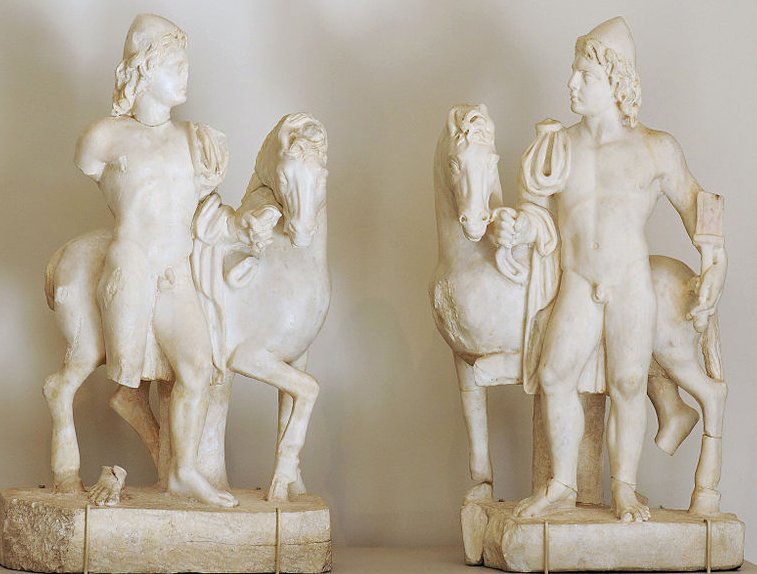3. Finally we ought to read in Allen: "Sharatan and Sheratan are from Al Sharatain, the dual form of Al Sharat, a Sign, referring to this and γ, the third star in the head, as a sign of the opening year; β having marked the vernal equinox in the days of Hipparchos, about the time when these stars were named. Bayer's Sartai is from this dual word ..." From the days of Hipparchos (ca 190 BC - ca 120 BC) the precession has moved the star roof about ca 30 days ahead: (155 + 2012) / 26000 * 365.25 = 30.4 Instead of the current position of Sheratan, rising heliacally on April 18, it was at the time of Hipparchos announcing spring equinox. Earlier some other star surely would have served the same purpose. Allen: "β and γ constituted the 27th 'nakshatra' Ašvini, the Ashwins, or Horsemen, the earlier dual Ašvināu and Ašvayujāu, the Two Horsemen, corresponding to the Gemini of Rome, but figured as a Horse's Head.
... In Greek and Roman mythology, Castor ... Κάστωρ, Kastōr, 'beaver', and Pollux or Polydeuces ... Πολυδεύκης, Poludeukēs, 'much sweet wine', were twin brothers, together known as the Dioscuri Διόσκουροι, Dioskouroi, 'sons of Zeus'. Their mother was Leda, but Castor was the mortal son of Tyndareus, king of Sparta, and Pollux the divine son of Zeus, who visited Leda in the guise of a swan. Though accounts of their birth are varied, they are sometimes said to have been born from an egg, along with their twin sisters Helen of Troy and Clytemnestra. ... When Castor was killed, Pollux asked Zeus to let him share his own immortality with his twin to keep them together, and they were transformed into the constellation Gemini. The pair were regarded as the patrons of sailors, to whom they appeared as St. Elmo's fire, and were also associated with horsemanship ... (Wikipedia) α sometimes was added to this lunar station, but β always was the junction star with the adjoining Bharani. About 400 years before our era this superseded Krittika as the leader of the 'nakshatras' ..." The earlier Sign was not a single star, though, it was the Pleiades: "The star cluster Krittika ... sometimes known as Kārtikā, corresponds to the open star cluster Pleiades in Indian astronomy and Jyotisa (Hindu astrology). The name literally translates to 'the cutters' ..." (Wikipedia) But the Pleiades are nowadays located in the 3rd right ascension hour and we should therefore wait with further comments. |
